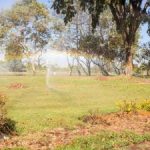Birds add beauty and interest to the winter landscape. Feeders dispensing sunflower seeds, suet and fruit will bring a number of birds in for observation, but the real key to lots of aviary action in your garden is including wildlife plants.
Wildlife plantings should include food plants as well as plants for cover.
- Not all the best wildlife food plants rate high as landscape plants, so find a corner of the yard for them. Evergreen plants such as native junipers, ashe juniper, eastern red cedar, and yaupon and Burford hollies are an excellent choice because they provide cover and food.
- Pyracantha is a versatile plant that can be pruned to any shape. Related to apple, its red berries are a favorite of cardinals, mockingbirds and others.
- Evergreens such as viburnum, Texas mountain laurel, Arizona cypress and agarita provide cover for birds from predators and a place to seek out insects.
- For seed-eating birds, leave the spent sunflowers and zinnias standing and also leave a weedy corner in the landscape so they can find seeds. Ornamental grasses such as gulf mulhy provide winter color, cover and seeds.
All wildlife need food and shelter, but during the winter our feathered friends especially do. Help them out by providing both.
Authored by Calvin Finch




